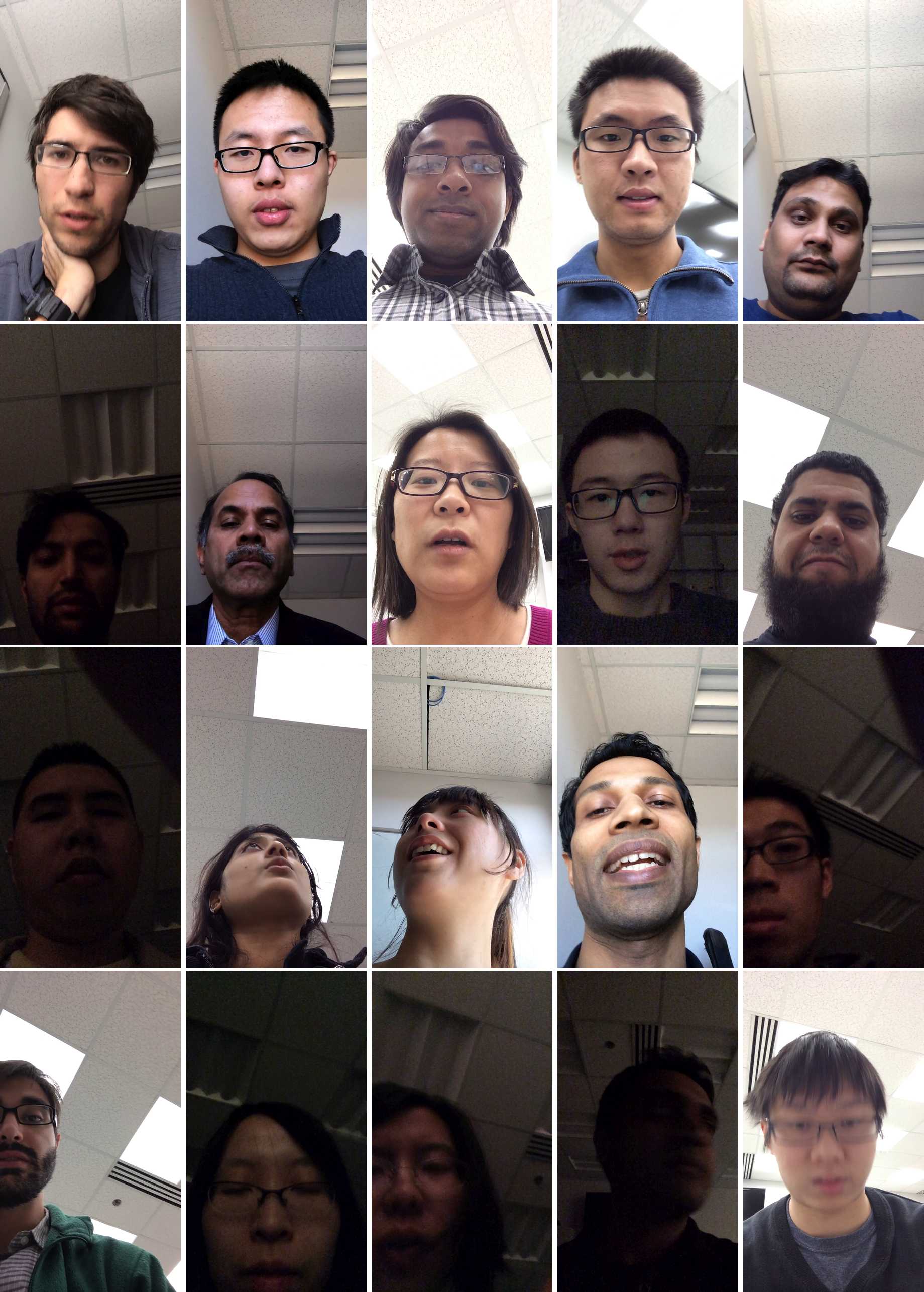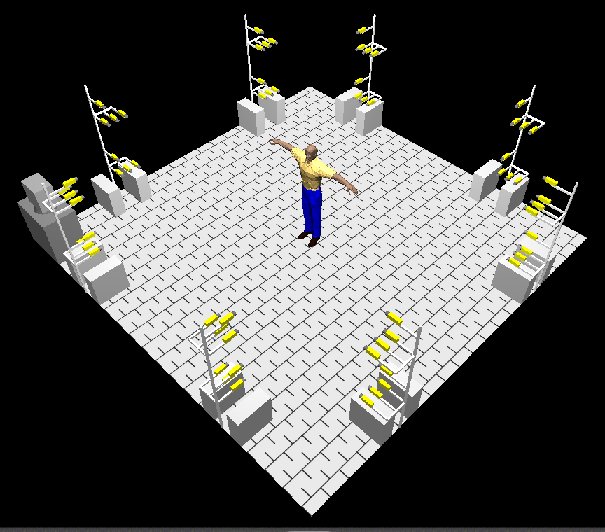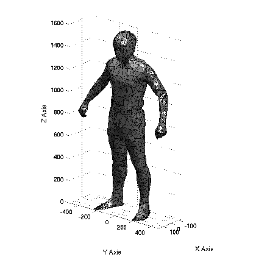Research
This page is incomplete and is being updated. :-)
|
|
Active Authentication on Mobile Devices
Rama Chellappa,
Larry Davis,
Vishal Patel,
Vlad I. Morariu

As mobile devices are becoming more ubiquitous, it becomes important to
verify the identity of the user during all interactions rather than just
at login time. Active authentication (AA) systems deal with this issue by
continuously monitoring smartphone sensors after the initial access has
been granted. However, AA remains an unsolved problem specially for
smartphones.
This project aims to develop more robust algorithms for AA on smartphones
using various modalities such as face, touch gestures and other physiological
and behavioral traits.
Downloads
| Mobile Face Video Dataset:
(Download link available only by email)
The dataset includes 750 face videos of 50 users captured while using a
smartphone by its front-facing camera. For each user, five of the videos
are taken in a well-lit room, another five are taken in the same room with
dim lighting, and the remaining five are taken in a different room with
natural daytime illumination. Each group of five videos consists of one
video for enrollment and four videos taken while the user is using a
custom-written app to perform one of four tasks.
If you want to download the dataset, please send an email to
rama (at) umiacs*umd*edu
(replace the *'s with dots) with "Mobile Face Dataset Download Request"
in the subject line. Please also include basic information about yourself,
your institute and the reason you need the dataset. You will receive the download
link in a reply to your email.
|
UMDAA-02:
The University of Maryland Active Authentication Dataset-02 (UMDAA-02) data collection drive (15 Oct. to 20 Dec., 2015) yielded 141.14 GB of smartphone sensor signals collected from 48 volunteers using Nexus 5 phones as their primary device for around one week. The data collection sensors include the front-facing camera, touchscreen, gyroscope, accelerometer, magnetometer, light sensor, GPS, Bluetooth, WiFi, proximity sensor, temperature sensor and pressure sensor. The data collection application also stored the timing of screen lock and unlock events, start and end time stamps of calls, currently running foreground application etc. The usage information is arranged in "Sessions" which starts when the user unlocks the phone and ends when the phone goes to the locked state. Here we upload 2 modalities a) front camera captures (Images are captured at 3 fps for the first 60 seconds for each session) and b) touch.
Downloads:
UMDAA-02 face dataset
UMDAA-02 Touch dynamics datsaset
|
|
Independent Moving Object Detection
Rama Chellappa, Joshua Broadwater
|
The Science of Land Target Spectral Signatures
Rama Chellappa, Joshua Broadwater

This project is a collaboration with the Georgia Institute of Technology, University of Hawaii, Rochester Institute of Technology, Clark Atlanta University, and University of Florida. The Multiple
University Research Initiative (MURI) team is focused on understanding
the physical phenomena that affect target spectral signatures such as
weathering, atmospheric effects, and camera position. Our part of the
project focuses on incorporating physical phenomena into automatic target
detection/recognition (ATD/R) algorithms for hyperspectral imagery. Our
past research has provided improved parametric detectors that incorporate
sum-to-one and non-negativity abundance constraints. Our current research
revolves around the development of physics-based kernels for
non-parametric detectors and the development of advanced adaptive
threshold techniques based on importance sampling. |
Algorithms and Architectures For Vision Based Inference From Distributed Cameras
Rama Chellappa,
Ashok Veeraraghavan,
Gaurav Aggarwal
Project page
 This project is a collaboration with Dr.Shuvra Bhattacharya and Dr.Wayne Wolf .This project
develops new techniques for distributed smart camera networks through an
integrated exploration of distributed algorithms, embedded architectures,
and software synthesis techniques. The objective is to build real time
systems for coordinated inference from multiple cameras. Specifically, we
are investigating a series of complex smart camera algorithms and
applications, specifically, human gesture recognition; self-calibration of
the distributed camera network; detection, tracking and fusion of
trajectories using distributed cameras; view synthesis using image based
visual hulls; gait-based human recognition; and human activity analysis.
This project is a collaboration with Dr.Shuvra Bhattacharya and Dr.Wayne Wolf .This project
develops new techniques for distributed smart camera networks through an
integrated exploration of distributed algorithms, embedded architectures,
and software synthesis techniques. The objective is to build real time
systems for coordinated inference from multiple cameras. Specifically, we
are investigating a series of complex smart camera algorithms and
applications, specifically, human gesture recognition; self-calibration of
the distributed camera network; detection, tracking and fusion of
trajectories using distributed cameras; view synthesis using image based
visual hulls; gait-based human recognition; and human activity analysis.
|
New Technology for Capture, Analysis and Visualisation of Human Movement Using Distributed Cameras
Rama Chellappa,
Aravind Sundaresan,
James Sherman
Project page
 This project is a collaboration with the Biomotion Laboratory at Stanford University and the Media Research Laboratory at New York University.
The objective is to perform markerless motion capture using multiple
calibrated cameras. We use shape models such as super-quadrics to
represent the humans. Such models are essential for tracking the
articulated motion accurately.
This project is a collaboration with the Biomotion Laboratory at Stanford University and the Media Research Laboratory at New York University.
The objective is to perform markerless motion capture using multiple
calibrated cameras. We use shape models such as super-quadrics to
represent the humans. Such models are essential for tracking the
articulated motion accurately.
|
Insect Inspired Navigation of Micro Air Vehicles
Rama Chellappa,
Mahesh Ramachandran,
Kaushik Mitra,
Ashok Veeraraghavan
Project page
 This
project aims at developing autonomous Micro Air Vehicles capable of
navigation and terrain understanding. The project is a collaboration
with Aerospace Engineering , Mechanical Engineering Departments at the University of Maryland and Visual Sciences Group at Australian National University. This
project aims at developing autonomous Micro Air Vehicles capable of
navigation and terrain understanding. The project is a collaboration
with Aerospace Engineering , Mechanical Engineering Departments at the University of Maryland and Visual Sciences Group at Australian National University.
Current focus is on the following issues.
- Estimating the ego-motion of Micro Air Vehicles(MAV) from a
combination of visual and inertial sensors.
- Terrain Understanding from videos acquired from MAVs.
- Simultaneous tracking and Behavior analysis of social insects.
|
Multi-sensor Multi-nodal Fusion for Audio-Video Survillence
Rama Chellappa,
Qinfen Zheng,
Aswin Sankaranaryanan,
Wu Hao,
Xue Mei,
Seong-Wook Joo
Project page
 This project is a collaboration with BAE Systems and Prof. Jim McClellan of
Georgia Institute of Technology. This project addresses issues related to surveillance and outdoor scene monitoring and develops algorithms for the following.
This project is a collaboration with BAE Systems and Prof. Jim McClellan of
Georgia Institute of Technology. This project addresses issues related to surveillance and outdoor scene monitoring and develops algorithms for the following.
- Develop PDA based remote sentry devices for monitoring scene acoustic and video through secure wireless networks.
-
Multi-nodal Multi-sensor fusion for robust tracking with efficient use
of the individual modality for low power consumption and prolonged
battery life.
- Multi-camera tracking (especially for non-overlapping views).
|
Verification and Identification for Surveillance Video
Rama Chellappa,
Zhanfeng Yue, and
Arunkumar Mohananchettiar
Project page
 This project is a collaboration with SAIC Corporation. The objective is to
develop automatic target verification and identification for airborne
surveillance video. The following issues are addressed in the project:
Target detection from airborne surveillance video (moving platform).
Reliable target tracking. Shadow detection. A verification by synthesis
algorithm using homography and template matching. An alternative
verification system accomplishing tracking and recognition simultaneously.
This project is a collaboration with SAIC Corporation. The objective is to
develop automatic target verification and identification for airborne
surveillance video. The following issues are addressed in the project:
Target detection from airborne surveillance video (moving platform).
Reliable target tracking. Shadow detection. A verification by synthesis
algorithm using homography and template matching. An alternative
verification system accomplishing tracking and recognition simultaneously.
|
|
|








